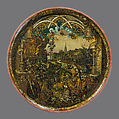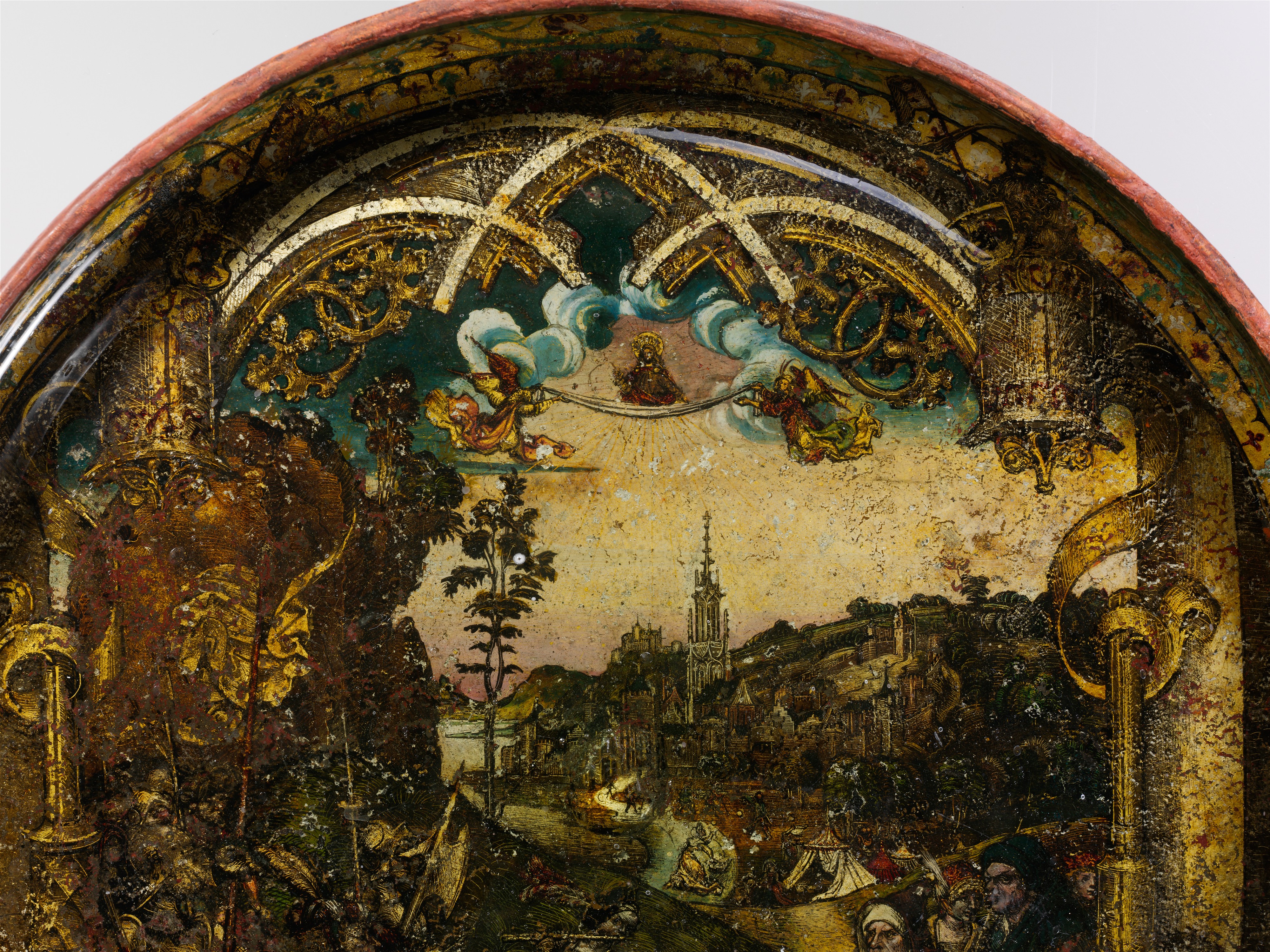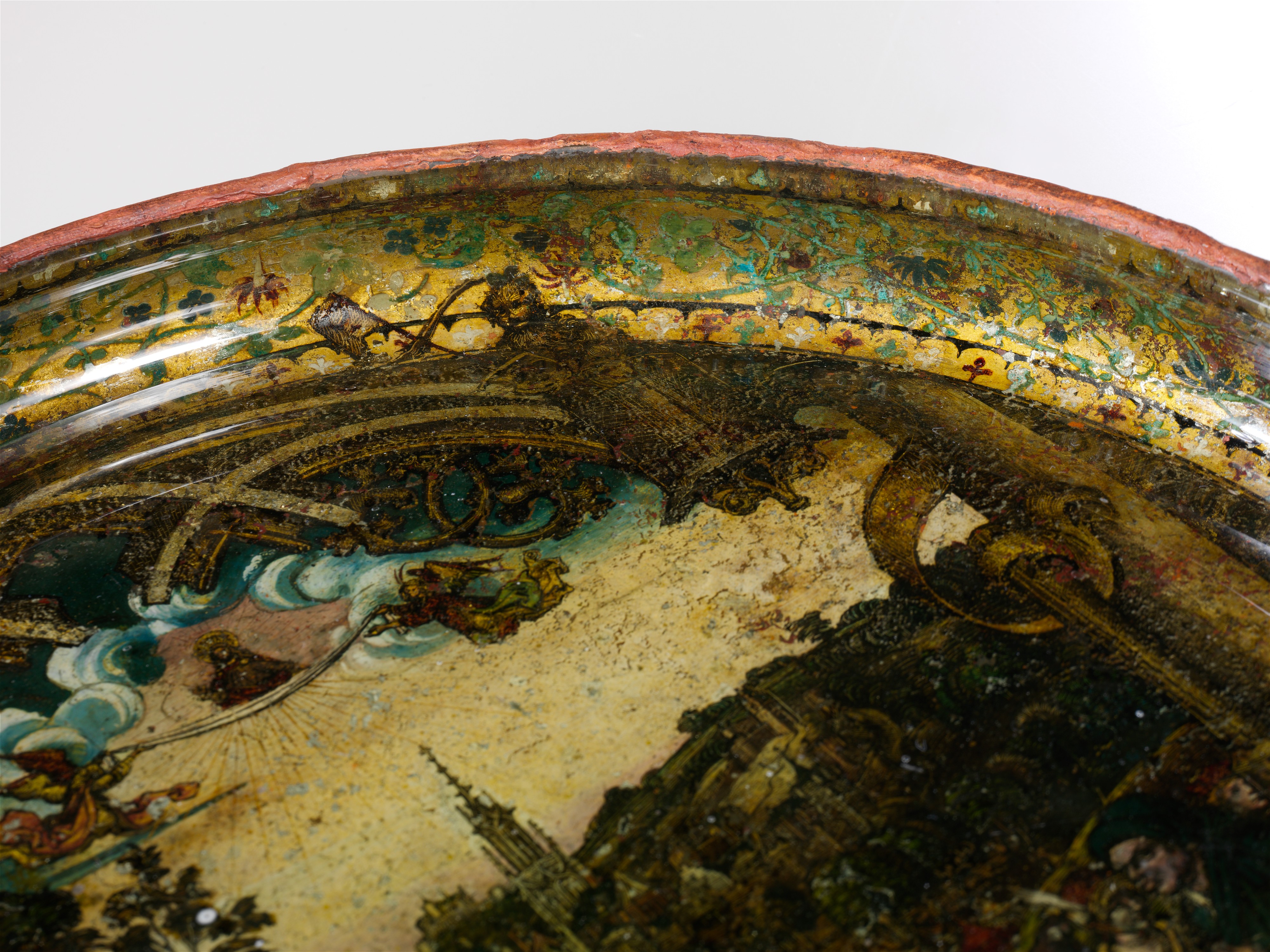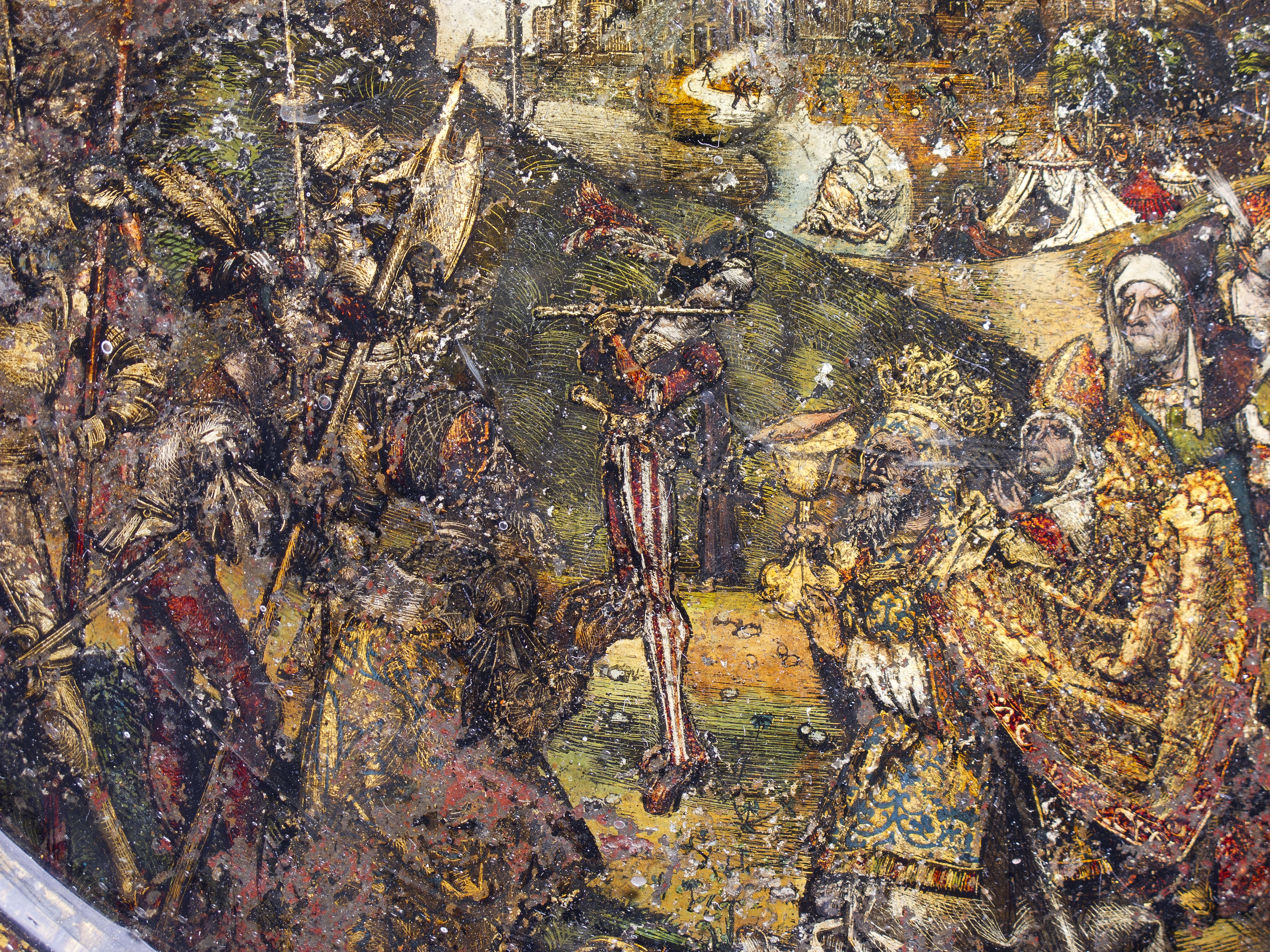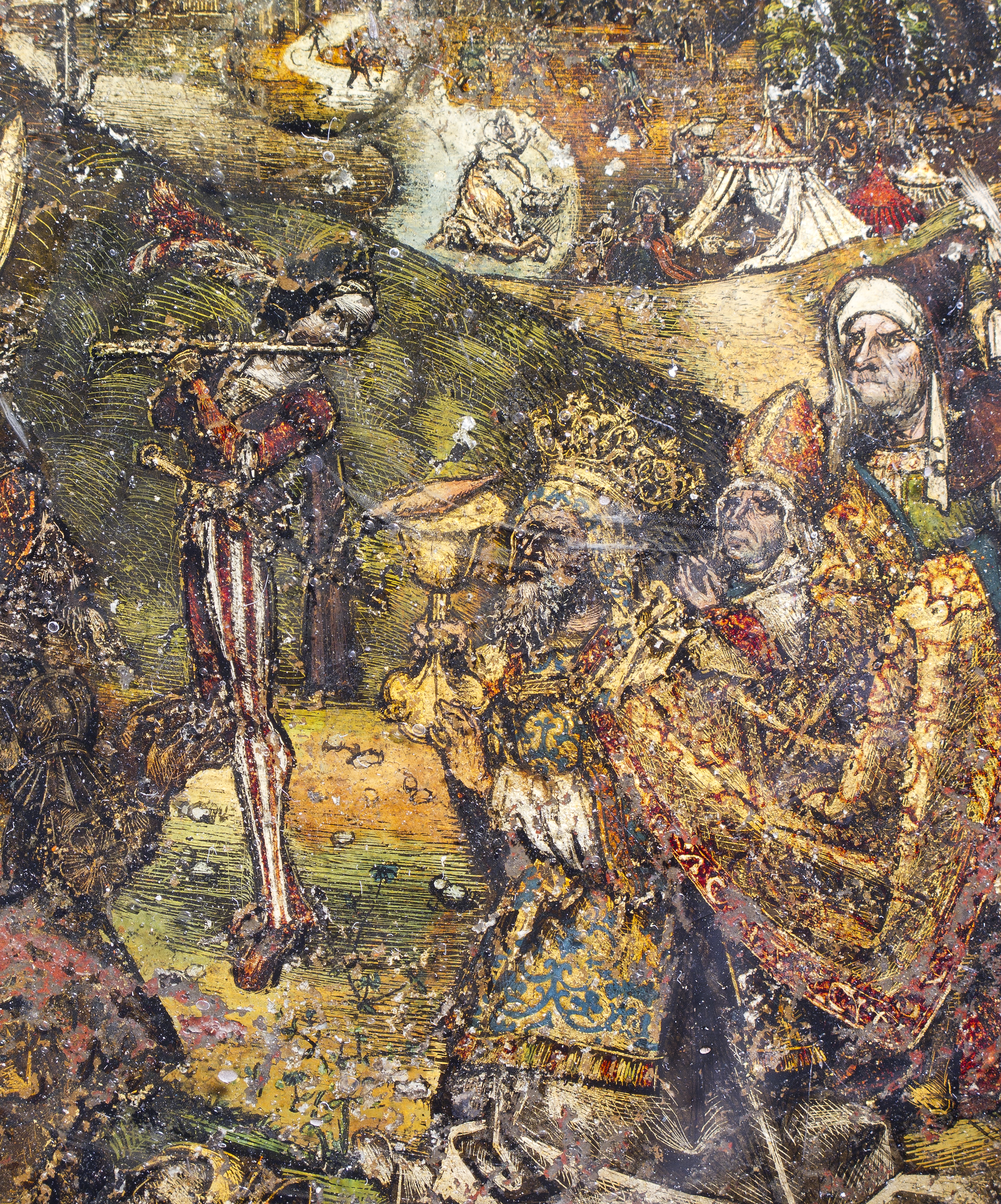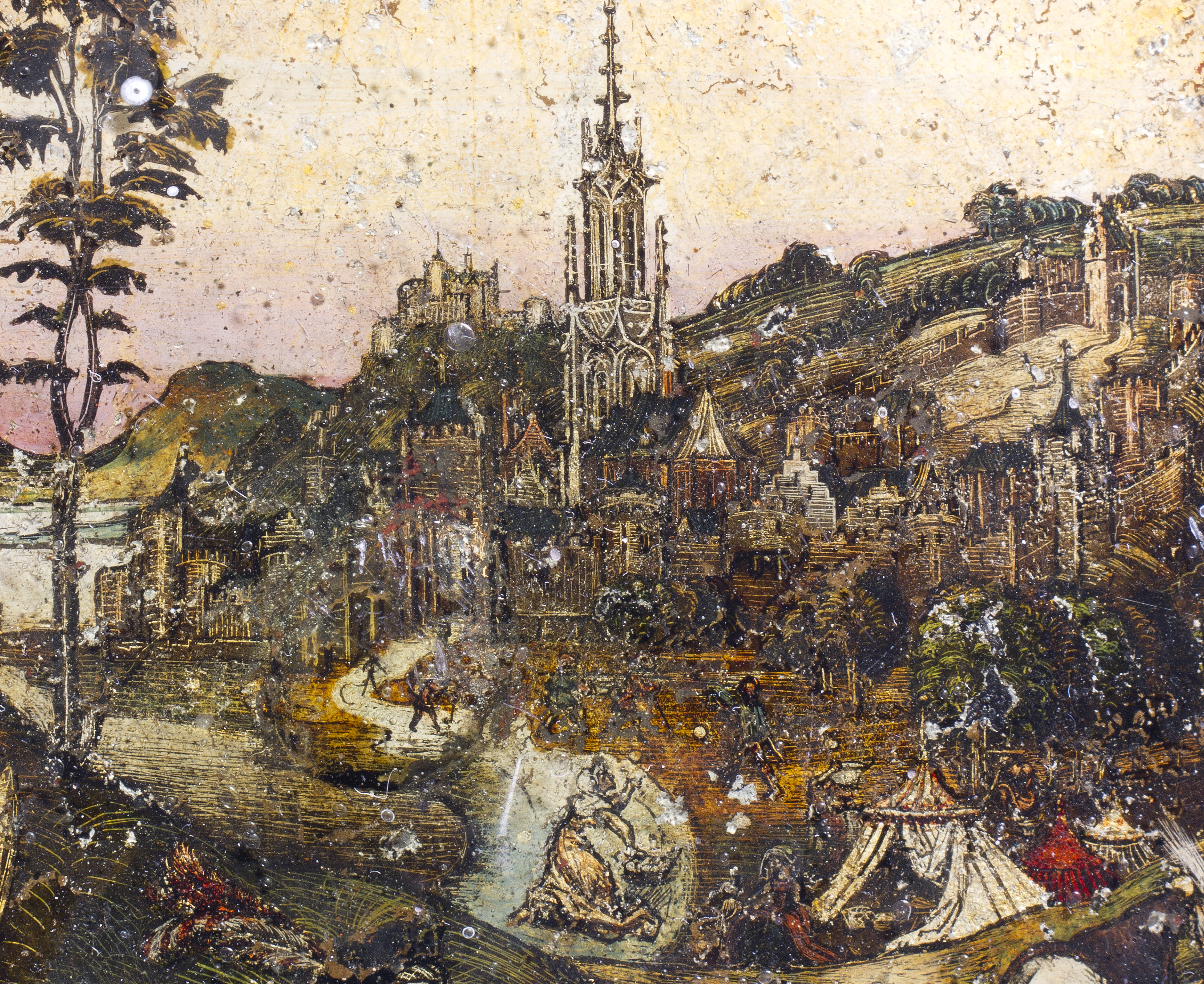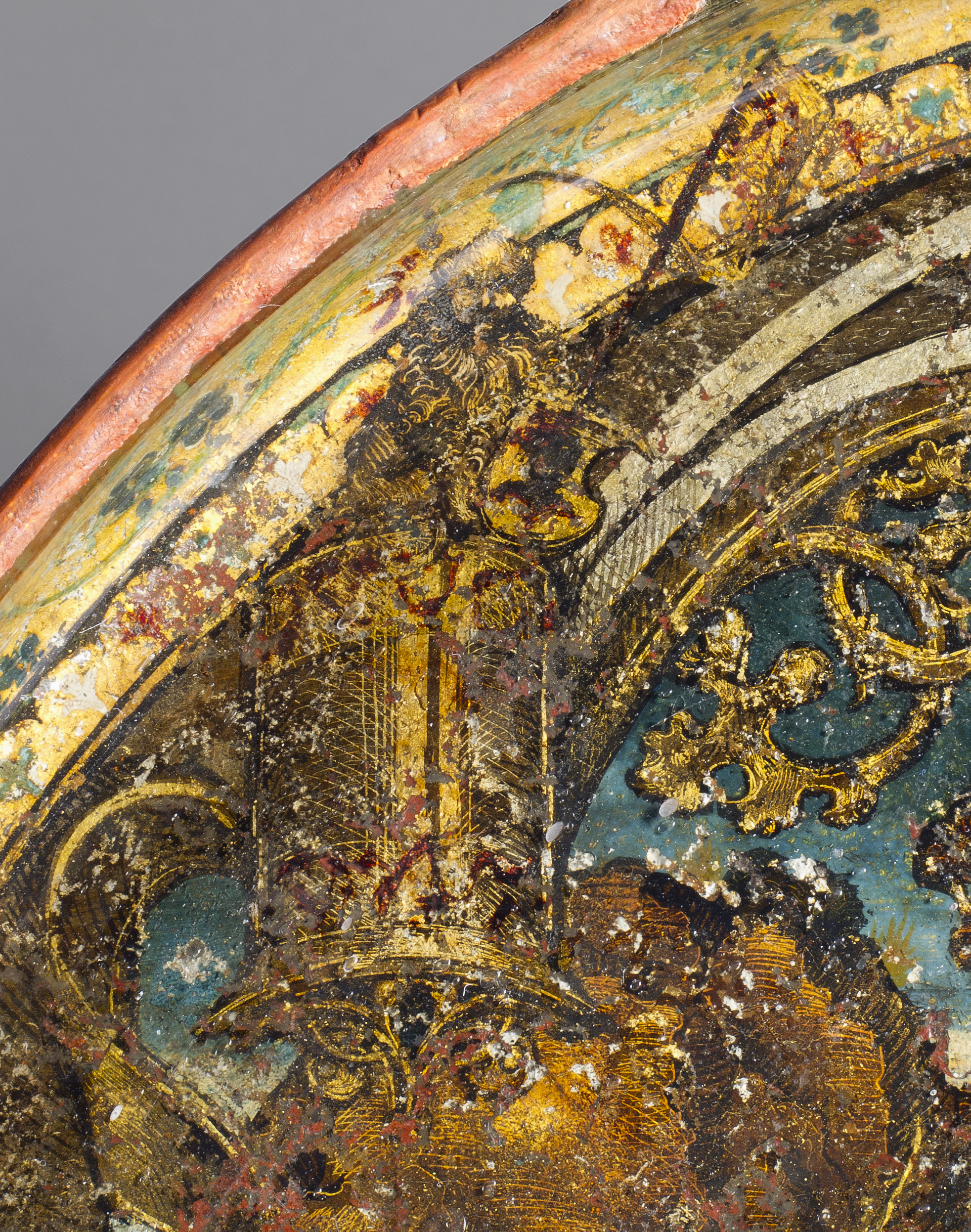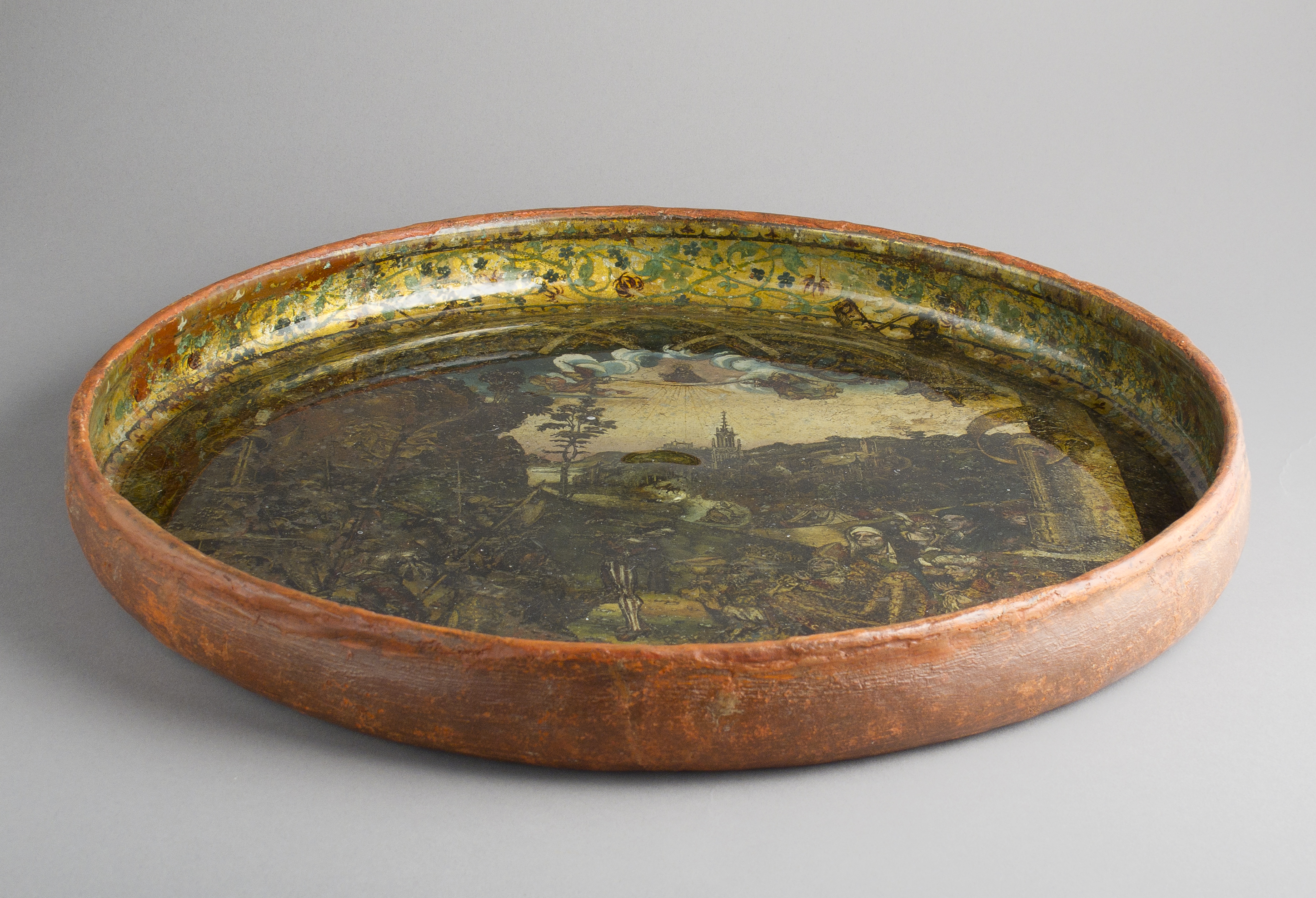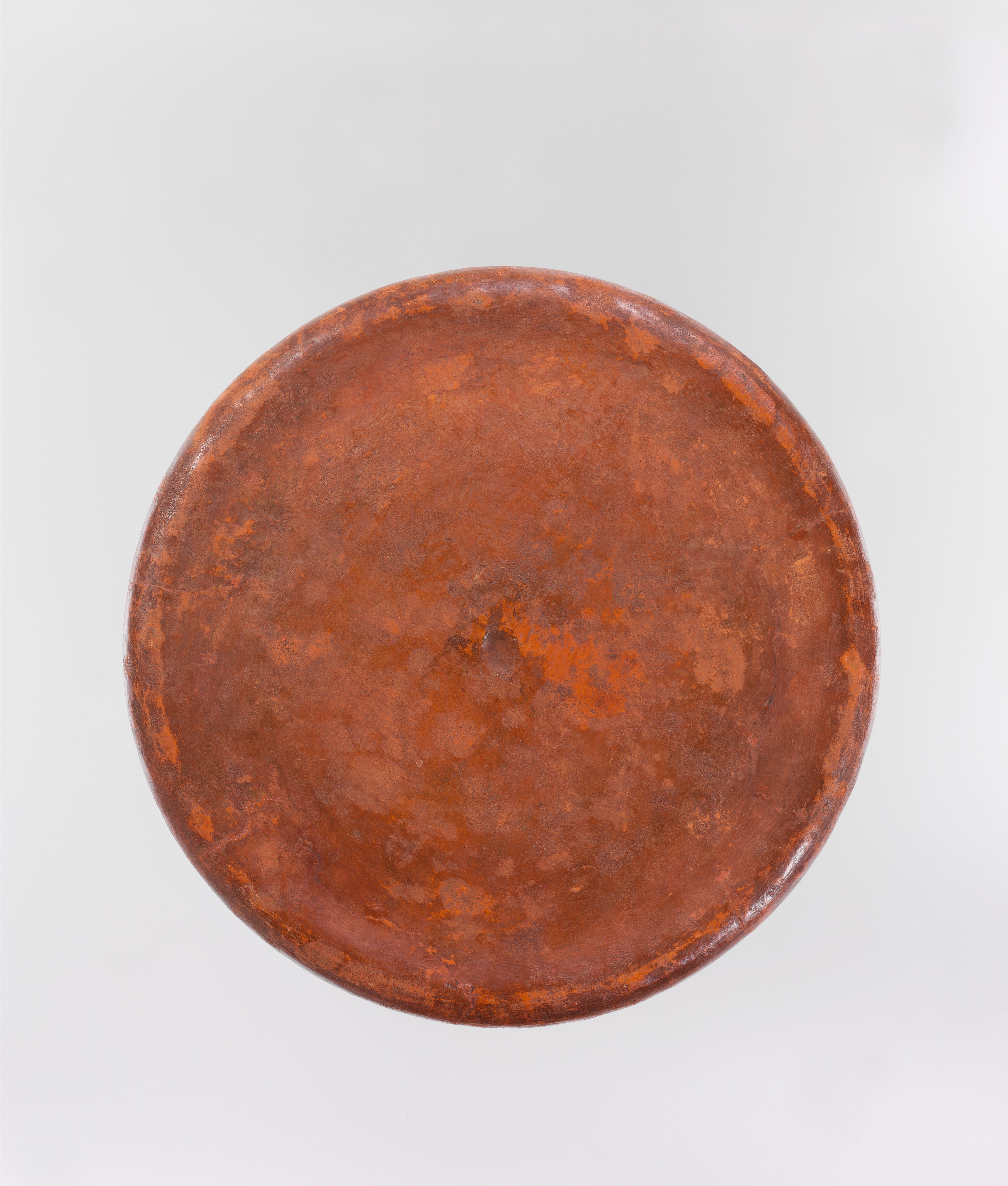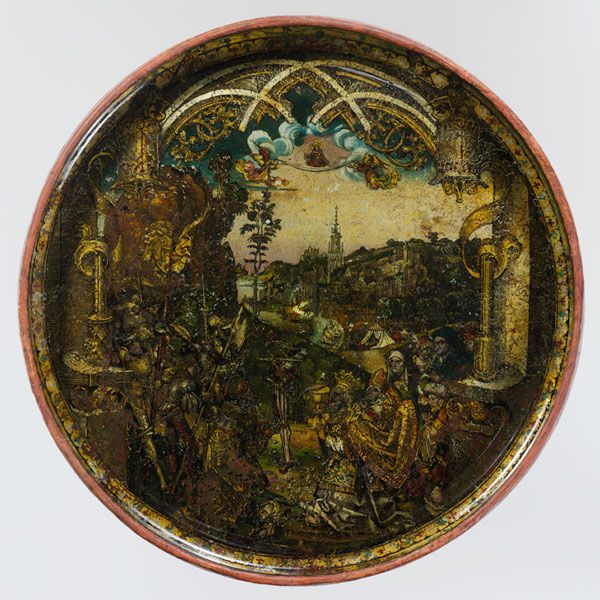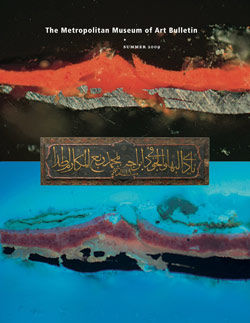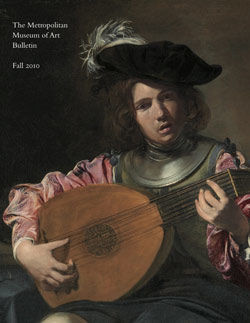Dish with Abraham and Melchizedek
Hans of Landshut German
This marvelously well-preserved example of reverse glass painting is unique in many ways. Its complex application of pigments, colored glazes, and metallic foils to the outside of the glass vessel—in the reverse order of panel painting—is unparalleled at this early date. The shape of the vessel is also unknown in northern Europe but found in Islamic lands; recent research suggests the glass was likely produced in the eastern Mediterranean and imported to Germany, where it was later decorated.
The painting shows the biblical patriarch Abraham, fresh from victorious battle, meeting the king and high priest Melchizedek, who gives him bread and wine, blesses him, and receives a tenth of Abraham’s loot (Genesis 14:18-20). Although this is an episode from the Hebrew Bible, Melchizedek is dressed as a bishop and his offering takes the form of a Christian chalice and paten, the plate for the bread consecrated at the Mass. These details, combined with the story’s emphasis on sacrifice and redemption, suggest the object likely served as a paten.
Curled banderoles below the bases of columns on either side are marked "1 [4]" (left) and "9 8" (right), indicating the year 1498. At the top of each lantern flanking the elaborate openwork arches above is a lion supporting a shield; these bear the arms of the city of Freising in southern Germany (left) and its Bishopric (right). The background, however, depicts the nearby town of Landshut. Two large glass dishes are recorded in Freising’s cathedral inventory in 1456, and a record from 1498 indicates that a certain "Master Hans, painter in Landshut" decorated one—almost certainly producing this artwork.
#139. Paten with Abraham and Melchizedek
Due to rights restrictions, this image cannot be enlarged, viewed at full screen, or downloaded.
This artwork is meant to be viewed from right to left. Scroll left to view more.
